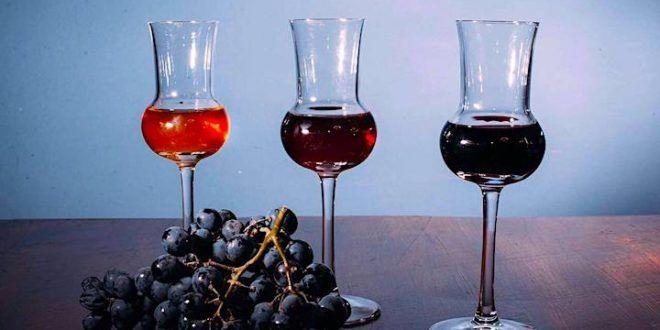In recent years, the beverage industry has undergone a significant transformation. One of the most remarkable trends has been the growing popularity of non-alcoholic wine. Once considered a novelty, non-alcoholic wines are now respected for their complexity, variety, and craftsmanship. Whether for health, religion, pregnancy, or personal preference, more consumers are reaching for a glass of wine minus the alcohol.
This article explores the world of non-alcoholic wine: how it’s made, its health benefits, flavour profiles, top brands, and why it's becoming a staple in modern wine culture.
What Is Non-Alcoholic Wine?
Non-alcoholic wine is not simply grape juice — it's real wine that has gone through the traditional fermentation process and had the alcohol carefully removed afterwards. The result is a sophisticated drink that offers wine's essence, flavour, and complexity, without the intoxicating effects.
To be labelled non-alcoholic, a beverage typically must contain less than 0.5% ABV (alcohol by volume). This tiny trace is considered negligible and safe for those who avoid alcohol entirely.
How Is Non-Alcoholic Wine Made?
The production of non-alcoholic wine starts the same way as traditional wine. Grapes are harvested, crushed, fermented, and aged. Once the desired flavour profile is achieved, the alcohol is removed using one of several techniques:
Vacuum Distillation
This method uses low heat under a vacuum to evaporate the alcohol while preserving the wine’s aroma and structure.
Reverse Osmosis
A more advanced technique, reverse osmosis filters out alcohol and water, allowing winemakers to recombine the remaining components with water, minus the alcohol.
Spinning Cone Column
This high-tech approach separates wine into layers using centrifugal force and heat, allowing precise control over flavour and aroma retention while removing alcohol.
Each method aims to maintain the wine's integrity and character—the bouquet, body, and taste—without compromising its alcohol-free status.
Health Benefits of Non-Alcoholic Wine
Non-alcoholic wine is more than just a drink — it’s a lifestyle choice with several potential health advantages:
Lower Calorie Content
Without the alcohol, these wines are significantly lower in calories. A standard 5-oz glass of non-alcoholic wine may contain as few as 20-40 calories, compared to 120-130 calories in regular wine.
Heart-Healthy Polyphenols
Red non-alcoholic wines still contain polyphenols, such as resveratrol, which are known for their antioxidant properties and potential cardiovascular benefits.
Safer for Pregnant Women and Drivers
Expecting mothers, designated drivers, or those with health restrictions can enjoy the flavour of wine without risking their safety or well-being.
No Hangovers
Enjoy a wine experience without worrying about dehydration, headaches, or morning-after regret.
Who Drinks Non-Alcoholic Wine?
The audience for non-alcoholic wine is surprisingly diverse. It includes:
- Health-conscious individuals are reducing their alcohol intake.
- Sober curious consumers exploring alcohol-free lifestyles.
- Pregnant women or those breastfeeding.
- People with religious or cultural restrictions on alcohol.
- Designated drivers and those in recovery from addiction.
As society becomes more mindful of wellness and inclusivity, the demand for high-quality non-alcoholic options is only increasing.
Popular Types of Non-Alcoholic Wine
Non-alcoholic wines come in various styles, much like their alcoholic counterparts. Some of the most popular varieties include:
- Non-Alcoholic Red Wine: Full-bodied options like Cabernet Sauvignon and Merlot offer deep, tannic profiles without the alcohol.
- Non-Alcoholic White Wine: Light and crisp wines such as Chardonnay or Sauvignon Blanc appeal to those who prefer citrusy and floral notes.
- Non-Alcoholic Rosé: A refreshing, fruity alternative perfect for summer sipping.
- Non-Alcoholic Sparkling Wine: Bubbly wines like de-alcoholised prosecco or brut are ideal for celebrations without the buzz.
Top Brands to Try
The quality of non-alcoholic wines has skyrocketed in recent years. Some of the most reputable and flavorful brands include:
- Ariel – Known for its premium alcohol-removed Cabernet and Chardonnay.
- Thomson & Scott Noughty – A vegan, organic sparkling wine line with international acclaim.
- FRE Wines – Produced by Trinchero Family Estates, offering various varietals.
- Leitz Eins Zwei Zero – A German brand with exceptional Riesling and sparkling rosé.
- Luminara – Napa Valley-crafted wines using high-end techniques for bold flavours.
These producers are proving that non-alcoholic wine can be equal to traditional labels in terms of taste and quality.
How to Serve and Pair Non-Alcoholic Wine
Serving non-alcoholic wine is much like serving traditional wine. Here are a few tips to enhance your experience:
- Chill white and sparkling wines to around 8–10°C (46–50°F).
- Serve reds slightly below room temperature at about 14–16°C (57–61°F).
- Use proper wine glasses to appreciate the aroma and mouthfeel.
- Pair with food thoughtfully — for instance, serve a non-alcoholic Chardonnay with creamy pasta or match a de-alcoholised Cabernet with grilled meats or mushroom dishes.
The Future of Non-Alcoholic Wine
The rise of non-alcoholic wine marks a cultural shift toward inclusivity and balance. What was once an afterthought is now a respected category, with sommeliers, chefs, and mixologists taking notice. The global market for alcohol-free wines is projected to grow exponentially, driven by Gen Z and millennials who prioritise wellness and moderation.
Restaurants, wine bars, and retailers are increasingly stocking non-alcoholic options — not just as alternatives, but as premium choices in their own right.
Conclusion
Non-alcoholic wine offers the richness of the vineyard experience without the side effects of alcohol. With improvements in taste, growing health awareness, and broader social acceptance, these beverages are more than a trend — they represent a new era in wine enjoyment.
Whether you’re abstaining temporarily or choosing a permanent alcohol-free lifestyle, you no longer have to sacrifice quality, flavour, or celebration. Pour yourself a glass, swirl, sip, and savour — the world of non-alcoholic wine is ready to be explored.
